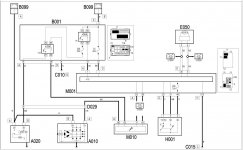JackGlendinning
New member
- Joined
- Oct 20, 2016
- Messages
- 27
- Points
- 9
Hi everyone
My GP is currently capable of running without the ignition being on!
Ignition relay is buzzing like hell when the battery is connected, and pulling the relay kills the engine. Have tried swapping the relay for a new one to no avail.
Issue started when I had a full loss of ignition and electric power on the road yesterday due to a loose battery terminal connection.
Anyone have any idea/experience of this?
Jack
My GP is currently capable of running without the ignition being on!
Ignition relay is buzzing like hell when the battery is connected, and pulling the relay kills the engine. Have tried swapping the relay for a new one to no avail.
Issue started when I had a full loss of ignition and electric power on the road yesterday due to a loose battery terminal connection.
Anyone have any idea/experience of this?
Jack
Last edited:


